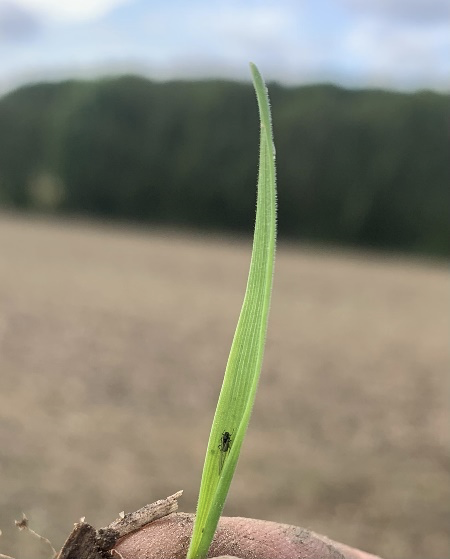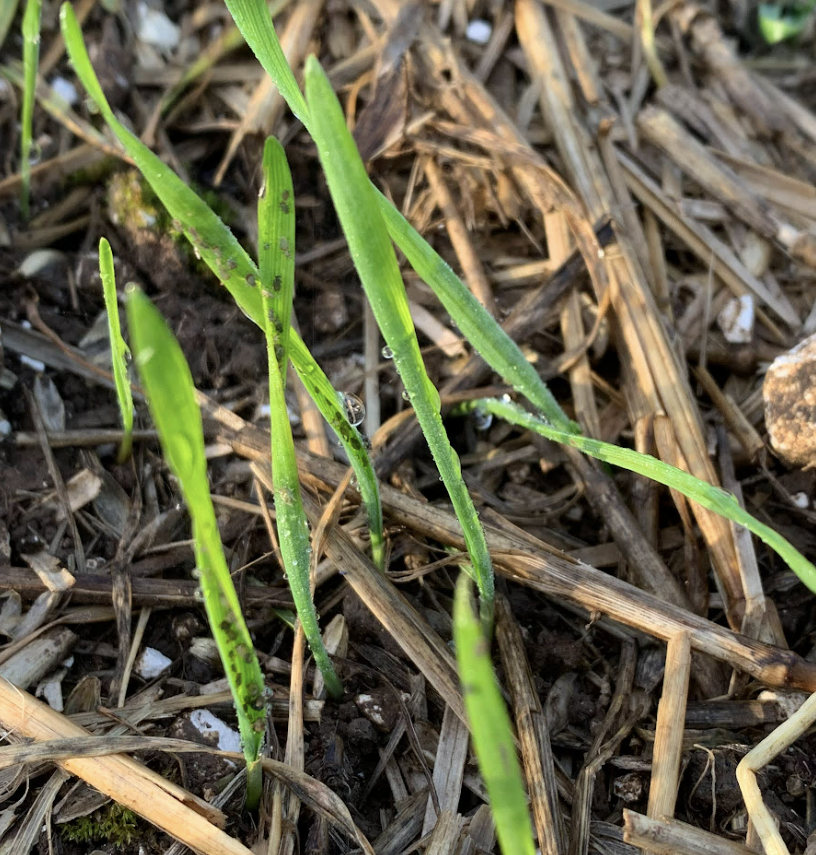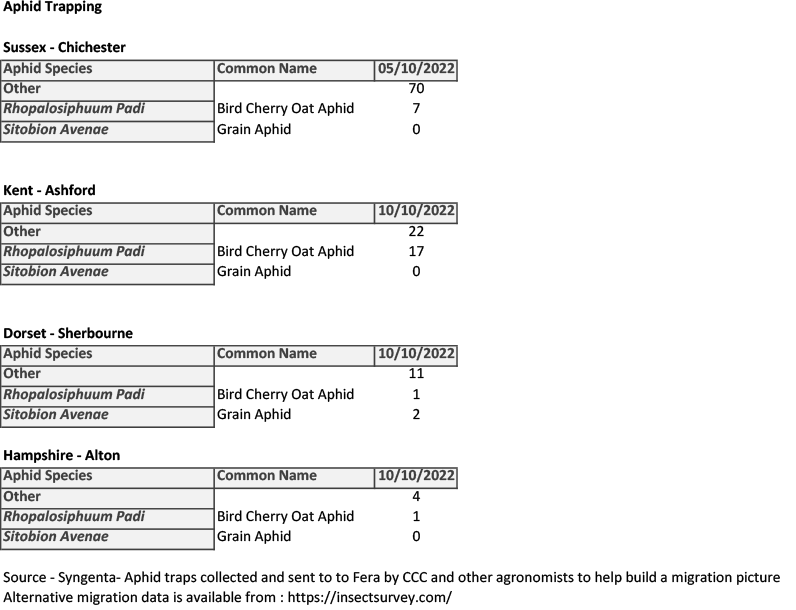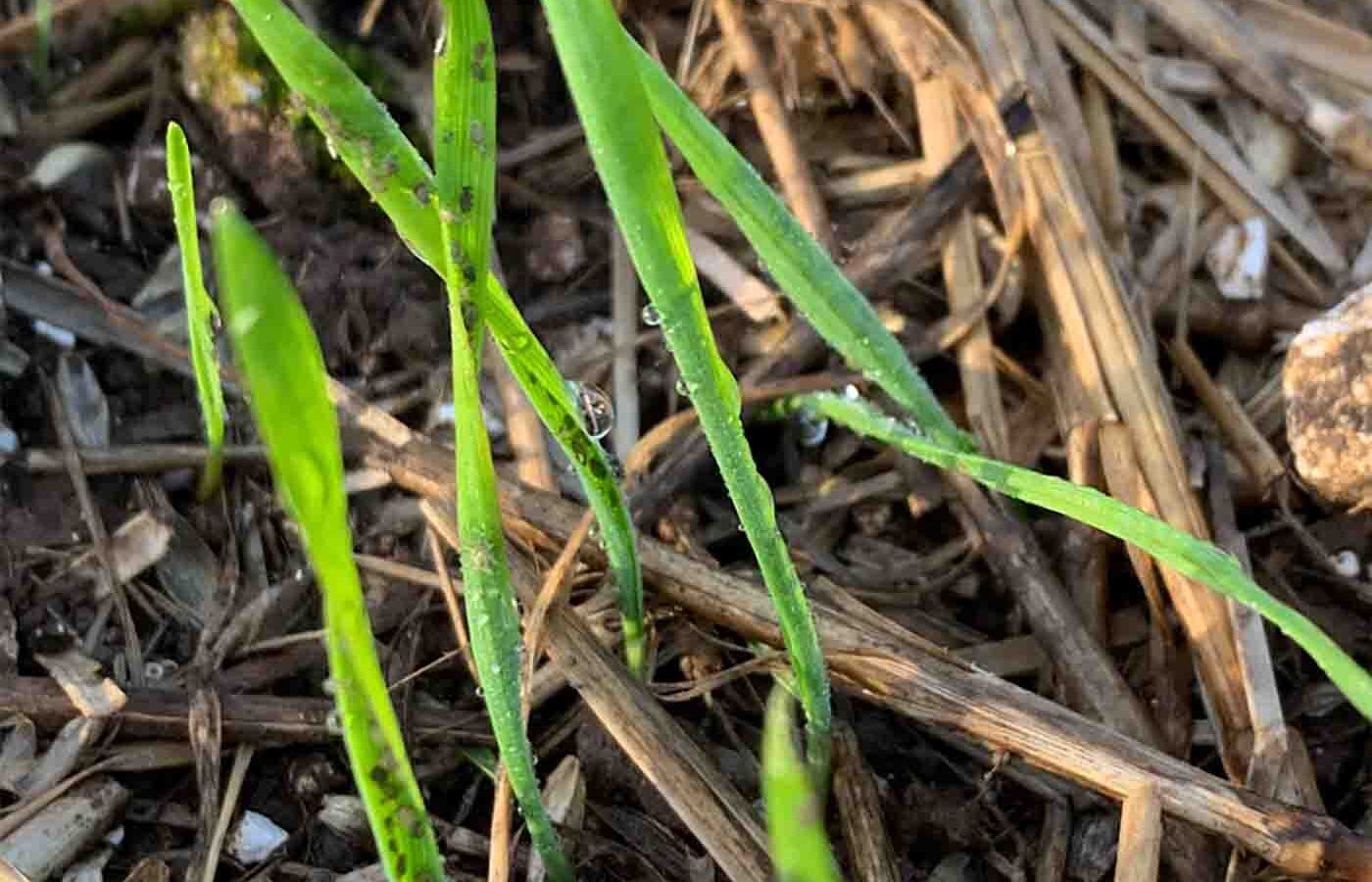With cereal drilling well underway, recent rain and warm soil temperatures emergence of the new crop will not take long. Thoughts turn to aphid monitoring and minimising potential for BYDV infection.
There are two main species that spread the virus:
- Bird cherry–oat aphid (Rhopalosiphum padi) predominantly in South of England
- Grain aphid (Sitobion avenae)

Yield losses are dependent on aphid activity, BYDV presence and strain within the aphid, growth stage at infection and environmental conditions.
Virus is not passed from parent to offspring it must be acquired through feeding on infected plants. This can take between 12-48 hours of feeding on an infected plant to acquire the virus.
Virus can be introduced to the crop via two ways:
- Indirect – winged aphids fly in from grass or volunteer cereals.
- Direct – wingless aphids that survive in the field on green bridge.

- Select lower-risk fields, such as fields with a low amount of surrounding grassland
- Encourage natural enemies, such as predatory beetles and web-spinning spiders which can help control aphid numbers, but may not prevent virus transmission
- Manage ‘green bridges’ that transfer aphids/virus to new crops.
- Drill crops as late as possible
- Use monitoring tools to assess aphid activity
- Manage aphid colonisation and spread, especially before growth stage 31
- Minimise general stress to plants
- Select BYDV-tolerant varieties, where appropriate.
Once the crop has emerged we need to carefully monitor individual fields for aphid presence. The obvious feeding occurs on the foliage, but aphids can also feed below ground on roots and stems.
Whilst we cannot prevent the indirect invasion, fly in of aphids, which if in low numbers will result in limited plant infection. To limit secondary infection on larger areas we need to monitor the development and spread of the winged aphids offspring. It usually takes around 170 day degrees (accumulated daily air temperatures, above a baseline temperature of 3ºC) from the initial fly in of winged aphids to offspring colonising and then looking to move from the host plant to a secondary spread onto surrounding plants. If numbers are high enough it is at this point we need to consider intervening with a foliar spray.
At CCC are monitoring aphid flights locally with weekly water trap counts as part of a wider project. The most recent results can be seen below:

To compliment the water traps there are various apps/ websites that can help us track this trigger date the AHDB website requires crop emergence date and will forecast when the 170 DD is reached.
The BYDV Assist app developed by Syngenta utilises the same data, allows you to enter multiple fields and their emergence date and gives an automated reminder when the 170 DD is approaching as a prompt to monitor specific fields.



